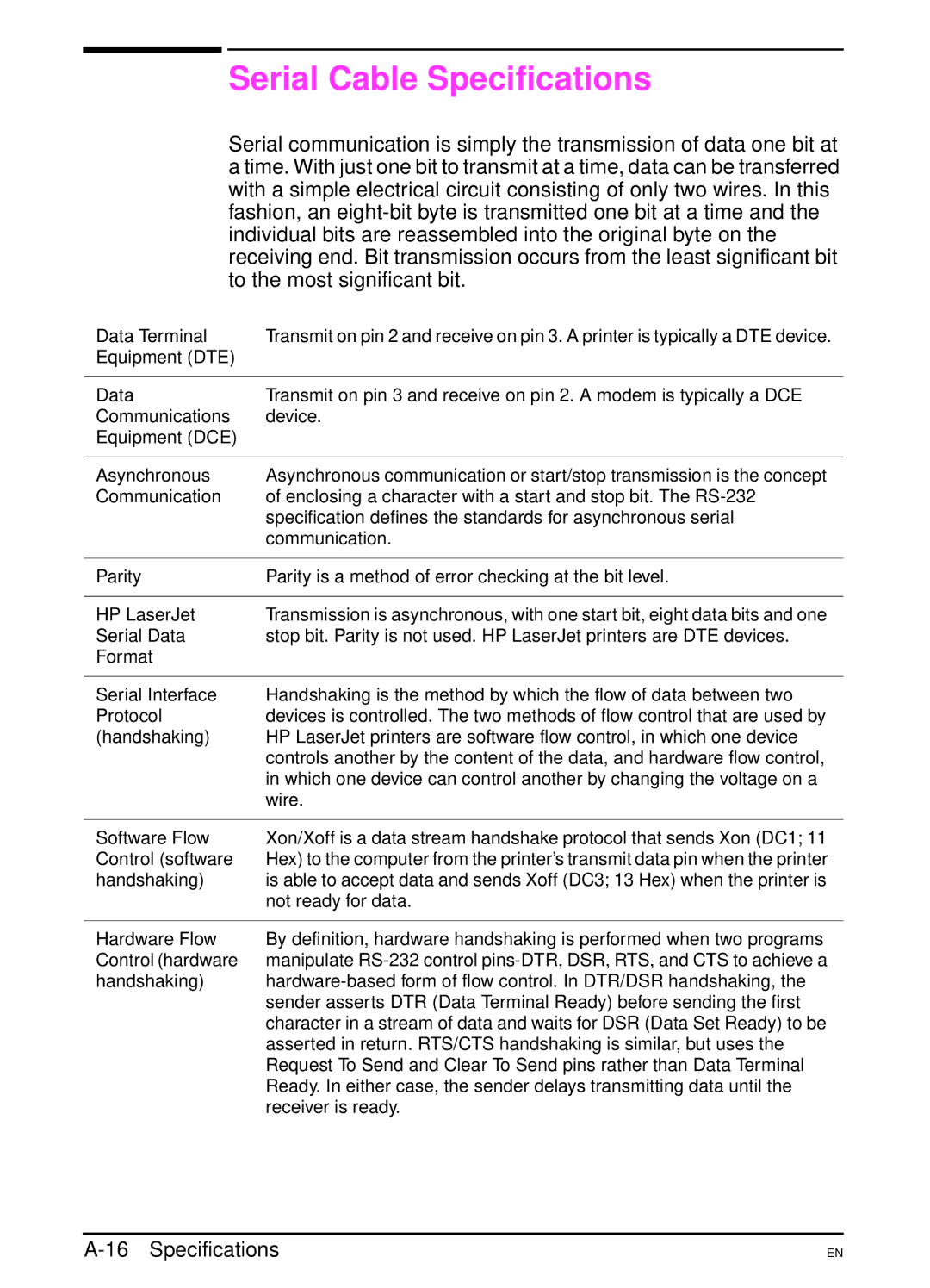
Serial Cable Specifications
Serial communication is simply the transmission of data one bit at a time. With just one bit to transmit at a time, data can be transferred with a simple electrical circuit consisting of only two wires. In this fashion, an
Data Terminal | Transmit on pin 2 and receive on pin 3. A printer is typically a DTE device. |
Equipment (DTE) |
|
|
|
Data | Transmit on pin 3 and receive on pin 2. A modem is typically a DCE |
Communications | device. |
Equipment (DCE) |
|
|
|
Asynchronous | Asynchronous communication or start/stop transmission is the concept |
Communication | of enclosing a character with a start and stop bit. The |
| specification defines the standards for asynchronous serial |
| communication. |
|
|
Parity | Parity is a method of error checking at the bit level. |
|
|
HP LaserJet | Transmission is asynchronous, with one start bit, eight data bits and one |
Serial Data | stop bit. Parity is not used. HP LaserJet printers are DTE devices. |
Format |
|
|
|
Serial Interface | Handshaking is the method by which the flow of data between two |
Protocol | devices is controlled. The two methods of flow control that are used by |
(handshaking) | HP LaserJet printers are software flow control, in which one device |
| controls another by the content of the data, and hardware flow control, |
| in which one device can control another by changing the voltage on a |
| wire. |
|
|
Software Flow | Xon/Xoff is a data stream handshake protocol that sends Xon (DC1; 11 |
Control (software | Hex) to the computer from the printer’s transmit data pin when the printer |
handshaking) | is able to accept data and sends Xoff (DC3; 13 Hex) when the printer is |
| not ready for data. |
|
|
Hardware Flow | By definition, hardware handshaking is performed when two programs |
Control (hardware | manipulate |
handshaking) | |
| sender asserts DTR (Data Terminal Ready) before sending the first |
| character in a stream of data and waits for DSR (Data Set Ready) to be |
| asserted in return. RTS/CTS handshaking is similar, but uses the |
| Request To Send and Clear To Send pins rather than Data Terminal |
| Ready. In either case, the sender delays transmitting data until the |
| receiver is ready. |
EN
